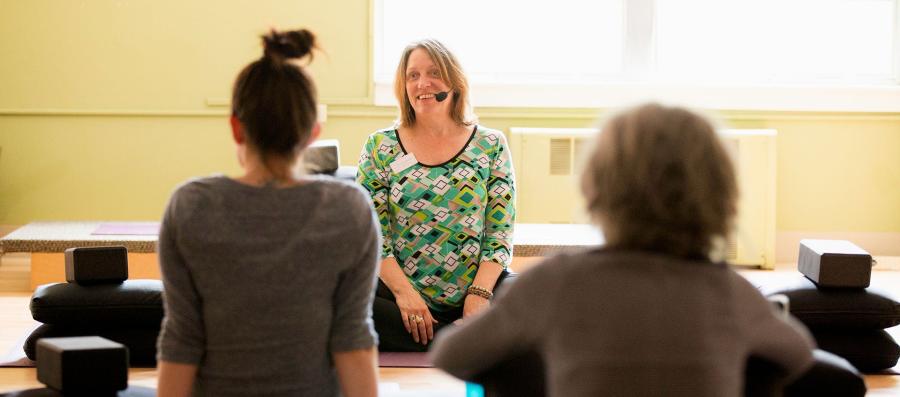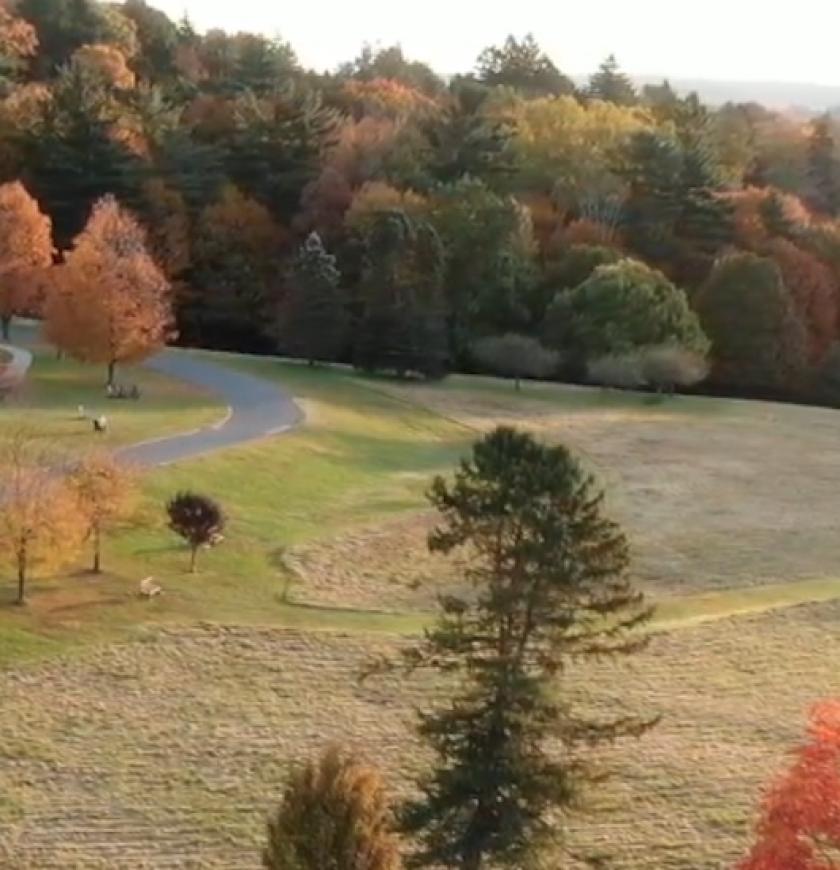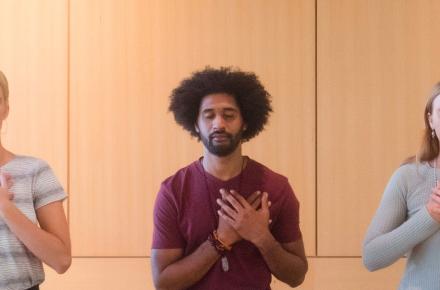Reaching In, Reaching Out: The Play Between Prana and Apana

“Living life can deplete us,” says Dean of the Kripalu School of Yoga Cristie Newhart. It’s a sunny fall morning in the Forest Room at Kripalu, and Cristie is leading an R&R workshop called “Reaching In, Reaching Out.” The atmosphere is cozy and inviting, and the group’s attention is rapt as Cristie—a dynamic, engaging speaker who exudes equal parts warmth and wisdom—explains how yoga’s deeper philosophical aspects can be applicable to our modern-day lives.
Distraction, overstimulation, and striving for sensory pleasure are par for the course in our plugged-in yet often disconnected society, Cristie points out. How, then, do we come to a place of balance and harmony, a state that is known in yoga and Ayurveda as “sattva”? The ancient yogis understood that our energy can draw us out into the world, or deeper into ourselves. These energies, called prana and apana, can influence how we experience life at every level.
Prana is the energy that moves up and inward—the energy that leads us to our source. The higher the prana, the more cloistered we become in our inner world. Apana, on the other hand, is outward-moving energy—the energy that brings us into the world, the fuel that drives us as we go about our lives.
These energetic forces—prana and apana—pull us in opposite directions and often compete with each other for our attention. Too much outward can deplete us; too much inward can disconnect us from the realities of our daily responsibilities. Balancing these energies is what we need as contemporary practitioners who juggle our mundane needs with our introspective aspects.
A powerful way to find that balance, Cristie says, is through pratyahara, one of the limbs of the eight-limbed path of yoga. Pratyahara is the withdrawal of the senses—inward gazing. The practices of pranayama, asana, and meditation were developed by the ancient yogis to draw us inside in order to cultivate pratyahara, which can help us manage our energy and find clarity and awareness. And, by looking inward, we can examine our outer lives with more insight: How much time do we spend on the computer? Are we binging on the latest buzz-worthy Netflix series because we’re truly engaged in the storyline, or are we simply looking for a mindless distraction? Are we drinking too much coffee? Eating too much sugar? These things can contribute to the depletion of prana, zapping our vitality. And, very often, we’re not aware of it.
The yogis taught that cultivating awareness brings us back to the present moment, to our direct experience—balancing out the pull of apana, which can drag us into the past or propel us into the future. When we have the urge to disconnect from the reality of the present moment, can we pause and connect to our feelings as we feel them, without attaching a story or a narrative to the feeling? Cristie suggests witnessing feelings as they arise, as opposed to identifying with them (“I am angry” versus “I am an angry person”).
Prana flows when we come back to the body—through pranayama, asana, meditation. Staying with whatever sensations arise, letting us soften inward as opposed to looking outside ourselves, is nourishing and grounding. For example, if you’re feeling stressed, you can close your eyes and take a few deep breaths, as opposed to reaching for a sugary treat.
Cristie says that negotiating between the energies that draw us inward and the ones that take us outward is akin to “dancing with the world.” Here are her tips for staying present and fostering sattva.
Spend time in nature. Open space, soothing sounds, fresh air … nature is filled with life-affirming prana.
Connect with others. Nourish your heart by carving out quality time with friends and loved ones—including pets.
Get creative. Writing, dancing, drawing, going to museums, and attending concerts and plays all enliven and enrich the senses.
Find out about upcoming programs with Cristie Newhart at Kripalu.
© Kripalu Center for Yoga & Health. All rights reserved. To request permission to reprint, please e-mail editor@kripalu.org.
















































